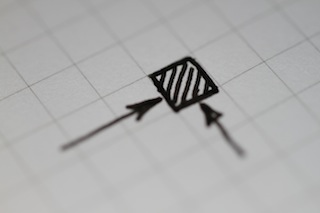

The QTH locator (or Maidenhead locator) is a handy and compact way of transmitting geographical coordinates used by radio amateurs. The main advantage is that the coordinates are expressed with very few characters and this is good for operating in CW.
The locator is a string of four or six characters that defines "squares" on the earth surface of 2° × 1° or 5' × 2.5' respectively, the longer string being more precise. For shortwave operations, usually four characters are enough, while for VHF or higher frequencies operations, six characters are preferred. Converted into distances a four character locator has a precision better than ±120 km while a six character locator is better than ±5 km.
The first character (from "A" to "S") defines the longitude in 20° steps while the second character (from "A" to "S" too) defines the latitude in 10° steps. The origin ("AA") is located at 180° West and 90° South. The third and fourth digits (from "0" to "9") refine the coordinates by a factor of 10, defining slots of 2° for the longitude and 1° for the latitude. If present, the fifth and the sixth characters (both from "A" to "X") further refines the precision by a factor of 24 defining slots of 5' for the longitude and 2.5' for the latitude.
The use of this calculator is pretty simple: just type in the coordinates in the format you have and hit the "Convert" button next to it to convert in the other two formats. It can also be used to convert from degrees minutes and seconds into decimal degrees and vice-versa without even using the locator. The "get current location" button will try to obtain your current coordinates from your browser: it only works if geolocation is supported and enabled in your browser, and works better with devices equipped with a GPS.
If you need to convert to or from Swiss grid coordinates, a converter is available here.
This calculator is based on "Conversion Between Geodetic and Grid Locator Systems", QST January 1989, pp. 29-30, 43.
| Home | Electronics | Index | Page hits: 111767 | Created: 10.2013 | Last update: 01.2024 |